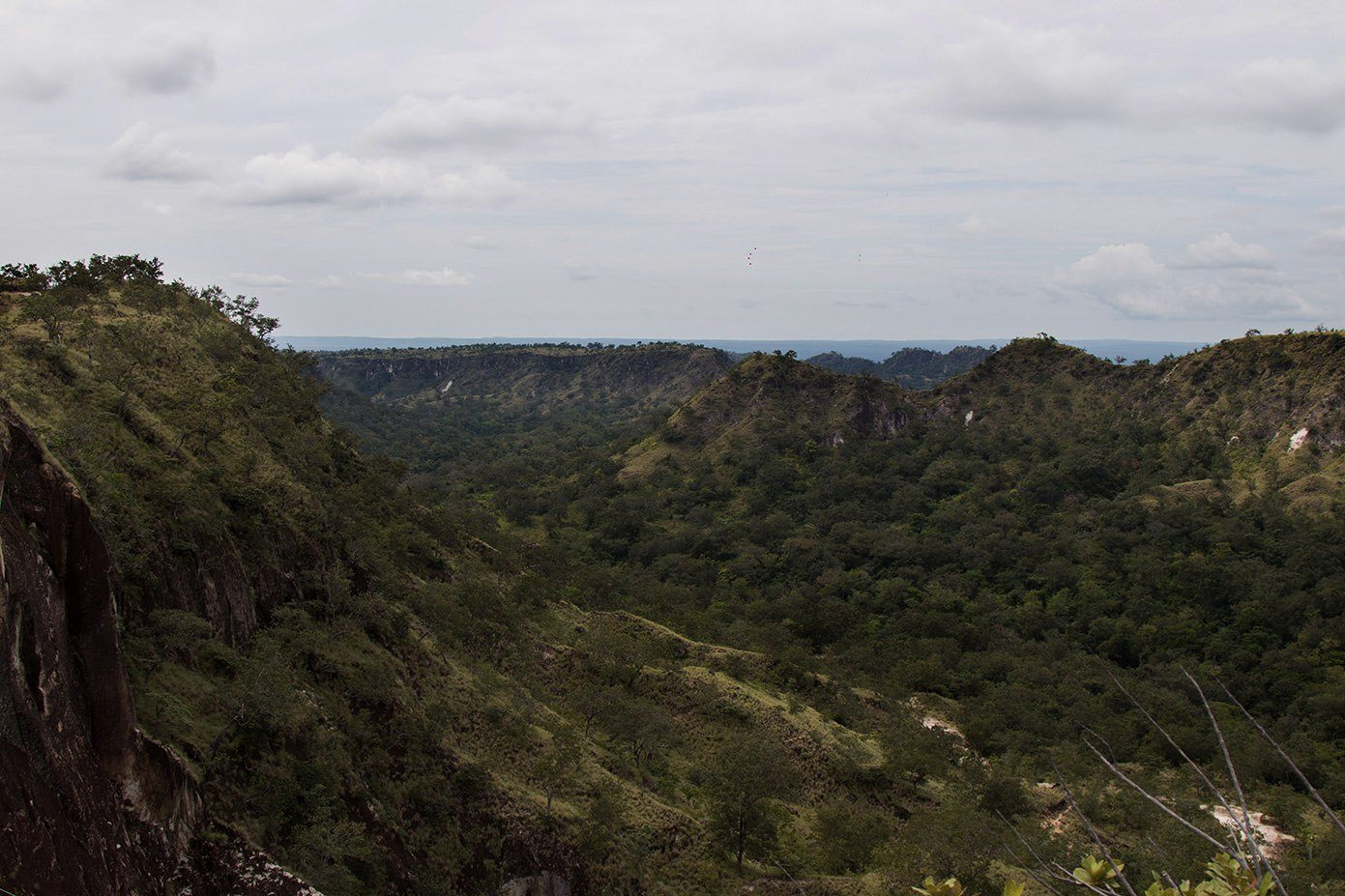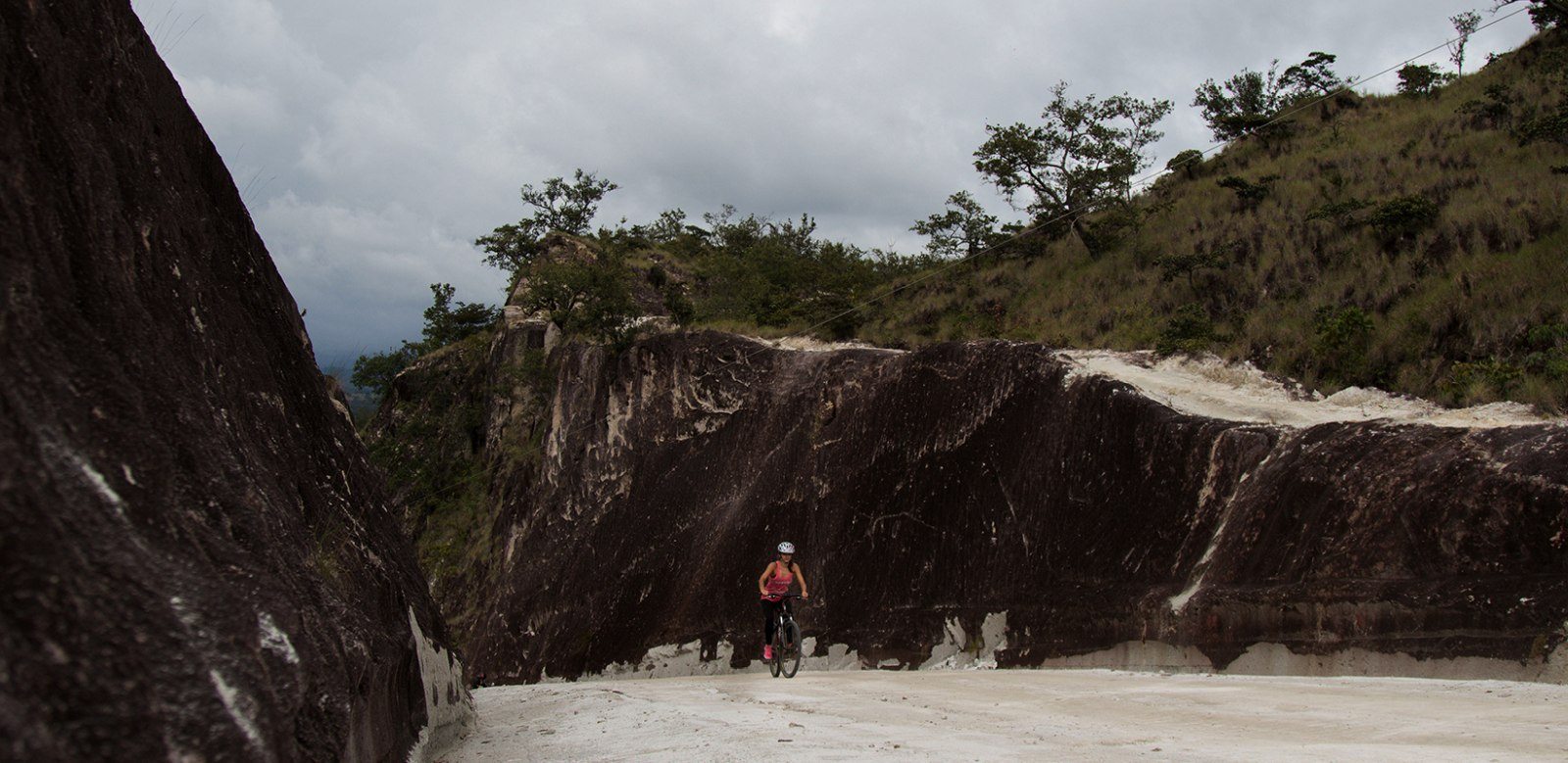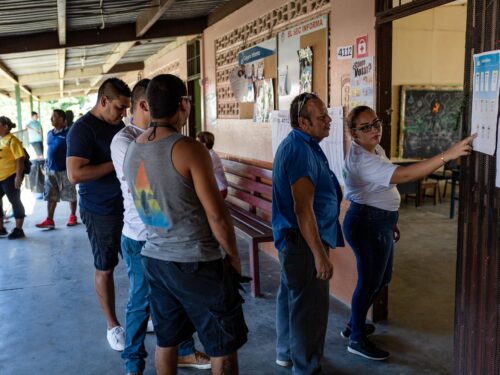
Sitting on a rock and letting the wind hit my face never made more sense that it does right now. In front of me a wall of giant, sharp rocks plunges into a river and patches of forest. A white covering spreads all around me that, if seen from afar, could look like snow. But it’s really gravel, the white material that Liberia used to build its streets years ago and which earned it the name the White City.
Millions of years ago, this crevice opened up in the heart of Liberia and gave it a water source, a gallery forest and an uncommon landscape, a part of which the Guanacaste Conservation Area (ACG) hopes to convert into a biological corridor: the Liberia River Canyon.
On top of this gravel devoid of minerals – which is really a mix of stone, quartz and other volcanic material – small, thorny vegetation grows with hard leaves and very twisted trunks.

If we were to try and compare it to something similar in the province we couldn’t do it, although those of us who are here agree that it looks a little like the moors of the high zones in the Central Valley such as the Cerro de la Muerte or Chirripó.
Maybe it can’t be seen easily, but this part of life that is underneath our feet and all around us serves as a buffer zone between the Rincón de la Vieja National Park and the city of Liberia. According to the ACG’s plan, it also serves as a biological corridor that, joined with other zones, connects Rincón de la Vieja with the Lomas de Barbudal natural reserve and the Palo Verde National Park.
In the green patch that survives there, clinging to land exposed to pollution from the Liberia River, strong winds and forest fires, is the wooded heart of Guanacaste: “It’s an example of the origins of the forests that were originally in our province,” says the head of the ACG’s Forest and Wildlife Resource Management Office, Francisco Ramírez.
Below, near the forest, you can find wild turkey, lowland pacas, deer and even felines. Above, the trees serve as a refuge from the wind for several bird species.
Do you want to pedal hard?
This is a site where you could spend hours just looking at the scenery, and feeling small but eternal. But some athletes also use the path that brought us here as training grounds.
The area is known as Morocochas, which includes part of the Colorado River Canyon, part of the Liberia River Canyon, and the El Salto River. You can get here via Moracia (by the garbage dump) or via the Pilas sector of Rincón de la Vieja, if you want to see a richer landscape. If you reach downtown Liberia and you ask someone how to get to Morochas, it’s very possible they’ll be able to direct you.
Some well-trained cyclists can get here with just their pedals. Others, like us, peddled part of the way and came the rest of the way in a car so we could bear the journey. Either way, you will be well compensated.







Comments